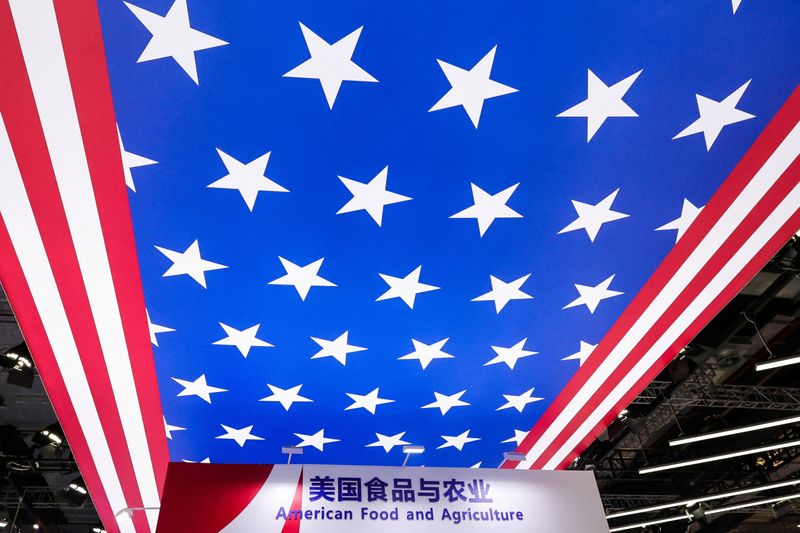At China’s largest import expo, US exhibitors hopeful worst of trade war is over
By Casey Hall
SHANGHAI (Reuters) -U.S. exporters of agricultural goods to China are optimistic that trade between the two countries will return to normalcy after a framework agreement reached last month by their leaders, according to several exporters and industry officials.
The mood this year in the U.S. pavilion at the China International Import Expo (CIIE), China’s largest import expo, which began on November 5 and wraps up in Shanghai on Monday, is positive.
“I think people are very hopeful,” Jeffrey Lehman, chair of the American Chamber of Commerce in Shanghai, which counts over 1,000 companies among its members, told Reuters at the U.S. Pavilion, which housed exhibits from industry bodies dealing in wine, ginseng, potatoes and more, and was 50% larger than last year’s.
“I think the reason why they’re here is because they want to engage with new customers. They want to find new opportunities for partnership, and I think they’re here because they think that’s going to happen,” he added.
CIIE kicked off just a week after a meeting between Chinese President Xi Jinping and U.S. President Donald Trump in South Korea that led to a framework agreement to roll back a number of tariffs and export control measures that had been put into place this year, including some that had overtly impacted exhibitors of agricultural products such as soybeans and sorghum.
“We just had this successful meeting in Busan, and so we’re celebrating that, but (we) had plans to come even before that meeting. I think that’s important to note that we didn’t give up on the relationship, that we were working to maintain and continue to strengthen the relationship, even if there were some troubles,” said Jim Sutter, CEO of the U.S. Soybean Export Council.
China had shunned soybean purchases from the U.S. 2025 harvest amid rising trade tensions between the two countries but has resumed purchases recently.
Mark Wilson, chairman of the U.S. Grains and BioProducts Council, pointed to recent shipments of soybeans and sorghum bought by China as a positive signal for future trade returning to normal. Prior to this year, China accounted for 95% of the U.S. export market for sorghum, he added.
“I do have hope that they continue talking, because if they can continue talking, they can hopefully work things out, because that’s what it takes,” Wilson said.
CHINA’S EXPANDING TRADE SURPLUS
Despite optimism from the U.S. agricultural associations in Shanghai, analysts say the latest trade détente hammered out by Xi and Trump may be no more than a fragile truce in a trade war with root causes still unresolved.



Leave a Comment
Your email address will not be published. Required fields are marked *